Featured Artist Bill Farran uses linocut printmaking to capture the spirit and beauty of lost treasures; in particular, the wooden synagogues of Eastern Europe. To enjoy more of his work, please visit his website.
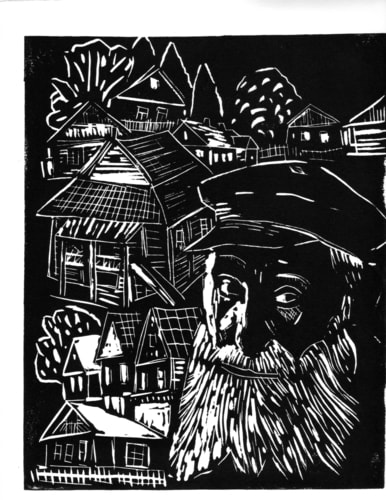
“Ulzany Elder” Linocut, 7″ x 9″
After retiring from teaching culinary arts and social studies in New York City, I began painting landscapes and portraits. In 2011, I began doing linocuts of wooden synagogues. I have combined my love of art, history and family genealogy.
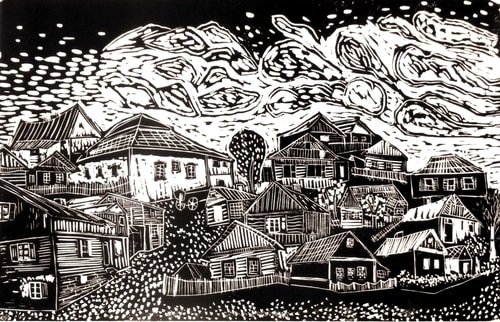
“Lost Souls Over the Shtetl” Linocut, 17″ x 11″
Many wooden synagogues were destroyed by the end of the holocaust. I researched photographs taken before World War II in order to find images of these wooden synagogues. I then turn these old photos and drawings into linocut or woodcut images. I also researched the history of the towns in an effort to get a sense of the people who lived in these villages. I try to open a window in time with my art.
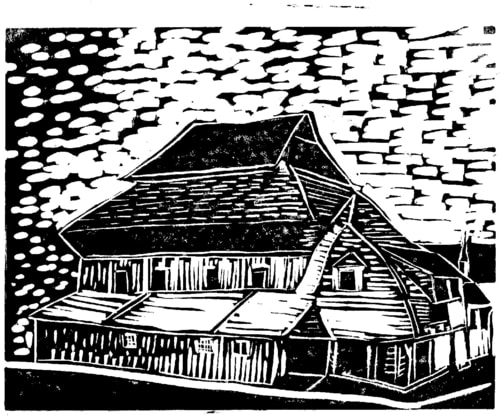
“Khodoriv, Ukraine” Linocut, 9″ x 7″
I am drawn to the architecture of wooden synagogues, which were usually huge log buildings. Equally, I am drawn to the people who lived during the time. I often feature people, especially musicians, in my prints.
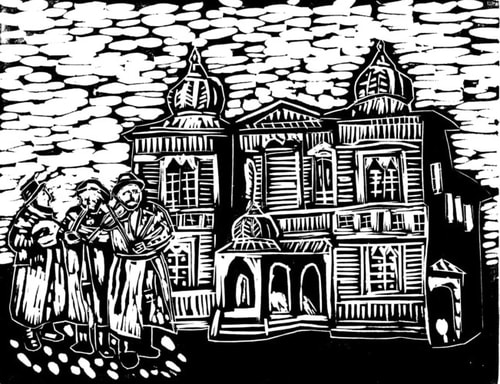
“Sierpc, Poland with Klezmer Trio” Linocut, 9″ x 7″
I love the power of black and white. As an artist, I have to give the appearance of gray tones, while using only black and white. I also love adding color by printing more than one block.
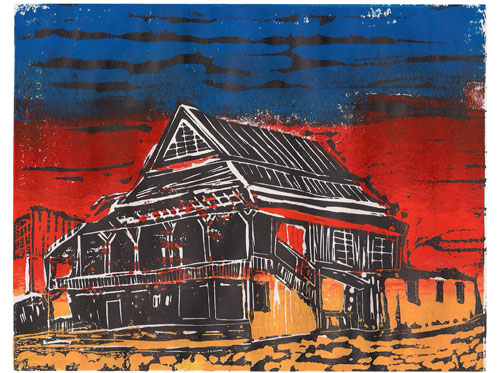
“Novyy Yarychiv, Ukraine Sunset” Linocut, 9″ x 7″
Sometimes the history of a synagogue inspires me to recreate it in my prints. The town of Olkeniki, Lithuania, has a special story. The synagogue was newly built when Napoleon, on his way to fight against the Russians, paid the synagogue a visit.
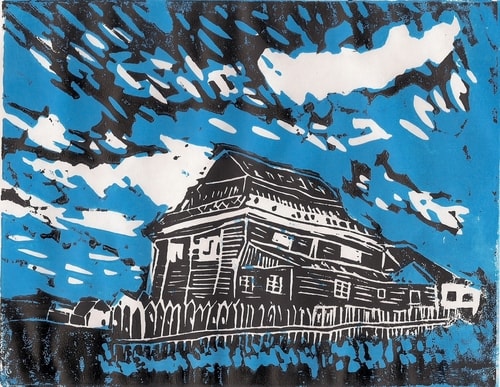
“Olkieniki, Lithuania” Linocut, 9″ x 7″
He was so impressed that he gave them a piece of his horse’s blanket, which they turned into a curtain for the synagogue.
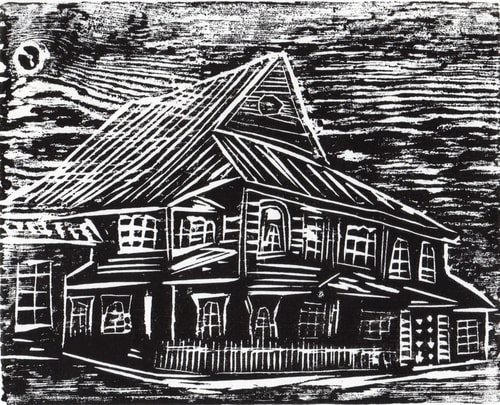
“Mahilyow, Belarus” Woodcut, 10″ x 8″
Every now and then I do a woodcut. Woodcuts take more time and effort and involve a lot of tool sharpening. The grain in the wood, however, makes the picture interesting.
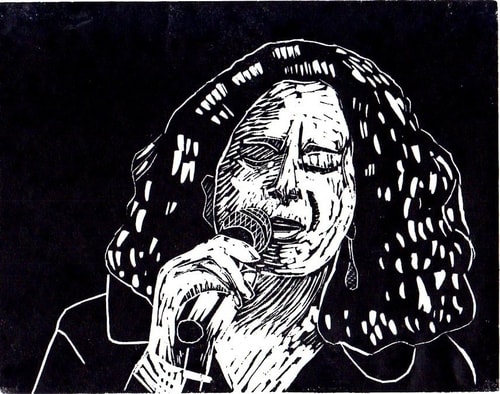
“Portrait of Elizabeth Schwartz, Singer” Linocut, 9″ x 7″
There are other topics that interest me such as portraiture. I am influenced by the woodcut arts of the German Expressionist of the 1930’s.
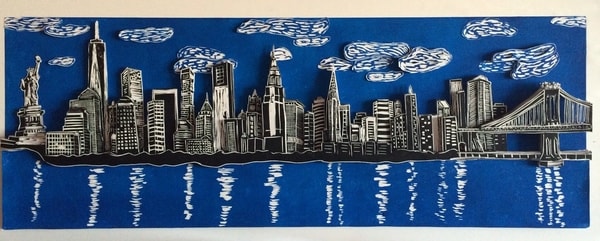
“City Scape” 3D Linocut, 44″ x 17″

“Cityscape at Sunrise” Linocut Collage, 44″ x 17”
I hand print my linocuts usually working small, but occasionally I work in a larger format. I turned this linocut into 3D picture (paper tole) using five layers to form the picture. I then printed it as a collage using a colored background.

Very interesting to read Bill’s evolving story. Much of it new to me.